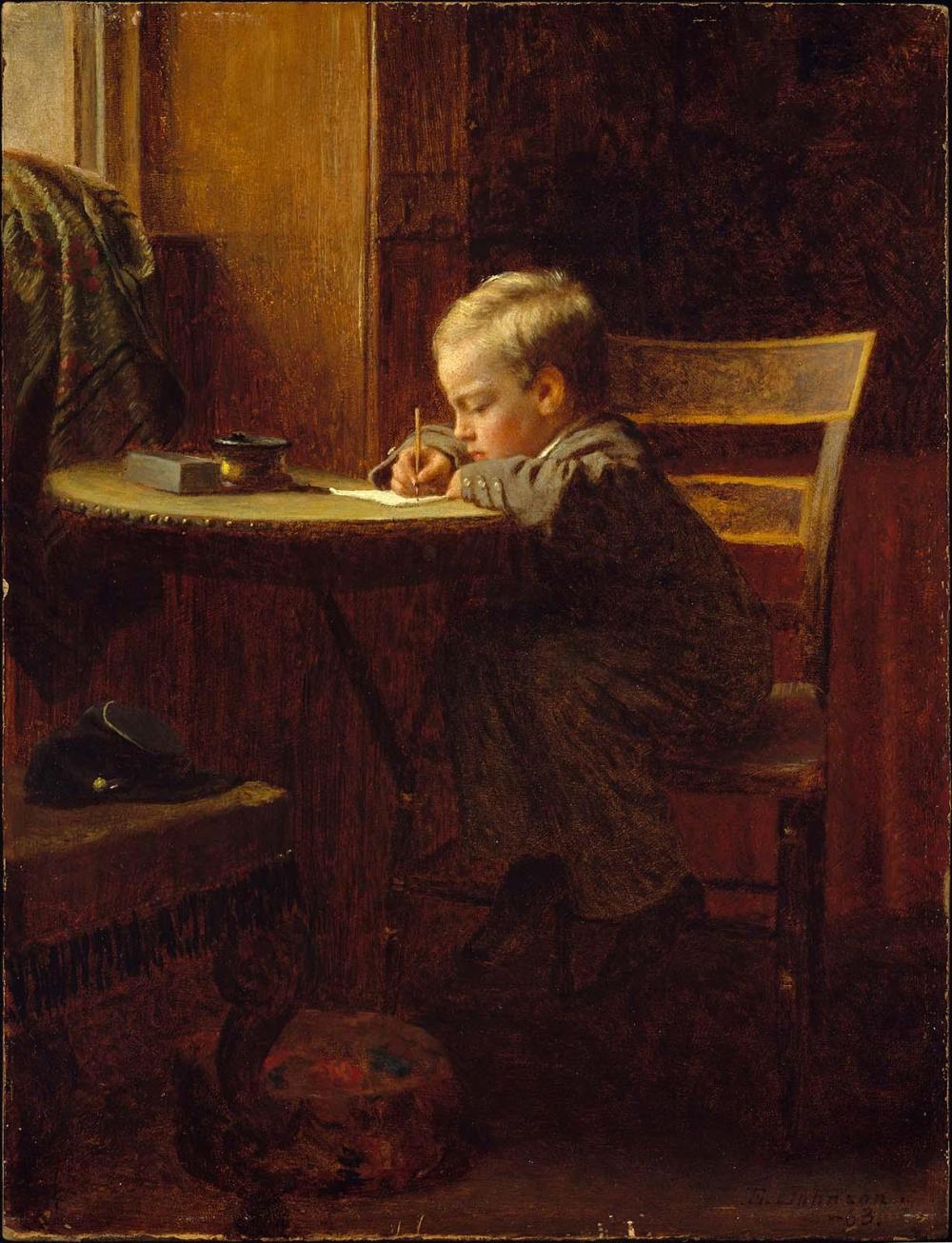Advanced Search 

Writing to Father
Eastman Johnson (American, 1824–1906)
1863
Medium/Technique
Oil on composition board
Dimensions
30.48 x 23.49 cm (12 x 9 1/4 in.)
Credit Line
Bequest of Maxim Karolik
Accession Number64.435
NOT ON VIEW
CollectionsAmericas
ClassificationsPaintings
Eastman Johnson’s early career parallels that of the slightly younger Winslow Homer, with whom he was compared for much of his life. Both were initially trained as lithographers in Boston and produced their first significant works in black and white; both went to Europe at critical points in their artistic development (Johnson studied in Düsseldorf and The Hague as well as visiting Paris); and both came to national attention with images depicting aspects of American life affected by the Civil War. Unlike Homer, however, who spent the better part of several years following the Union troops and produced many scenes of camp life, Johnson made only two or three brief trips to the battlefield. Most of his Civil War pictures depicted slaves or, as in this canvas of a small boy absorbed in a letter to his absent father, were centered on the home front, measuring the tragedy of the war by the cost to the children left behind.
In the charcoal study [1980.475] for this picture, the child appears even younger than he does here. The image focuses more tightly on him; both the room’s middle-class furnishings and references to the conflict—the cadet’s uniform and the solitary cap—were added as Johnson expanded his design and transformed the mood from that of a cozy interior and a poignant moment in this scene of an “every boy’s” life.
Paintings like this, with its narrative sentimentality, found an appreciative audience in New York; on April 27, 1862, the New York Times called another of Johnson’s pictures of a child left fatherless by the war “singularly beautiful.”
This text was adapted from Elliot Bostwick Davis et al., American Painting [http://www.mfashop.com/9020398034.html], MFA Highlights (Boston: MFA Publications, 2003).
In the charcoal study [1980.475] for this picture, the child appears even younger than he does here. The image focuses more tightly on him; both the room’s middle-class furnishings and references to the conflict—the cadet’s uniform and the solitary cap—were added as Johnson expanded his design and transformed the mood from that of a cozy interior and a poignant moment in this scene of an “every boy’s” life.
Paintings like this, with its narrative sentimentality, found an appreciative audience in New York; on April 27, 1862, the New York Times called another of Johnson’s pictures of a child left fatherless by the war “singularly beautiful.”
This text was adapted from Elliot Bostwick Davis et al., American Painting [http://www.mfashop.com/9020398034.html], MFA Highlights (Boston: MFA Publications, 2003).
InscriptionsLower right: E. Johnson./-63.
ProvenanceBy 1864, Robert Morrison Olyphant (1824-1918), New York. By 1940, Mrs. Edward W. McMahon. By 1960, Maxim Karolik, Newport, R.I.; 1964, bequest of Maxim Karolik to the MFA. (Accession Date: January 1, 1964)
